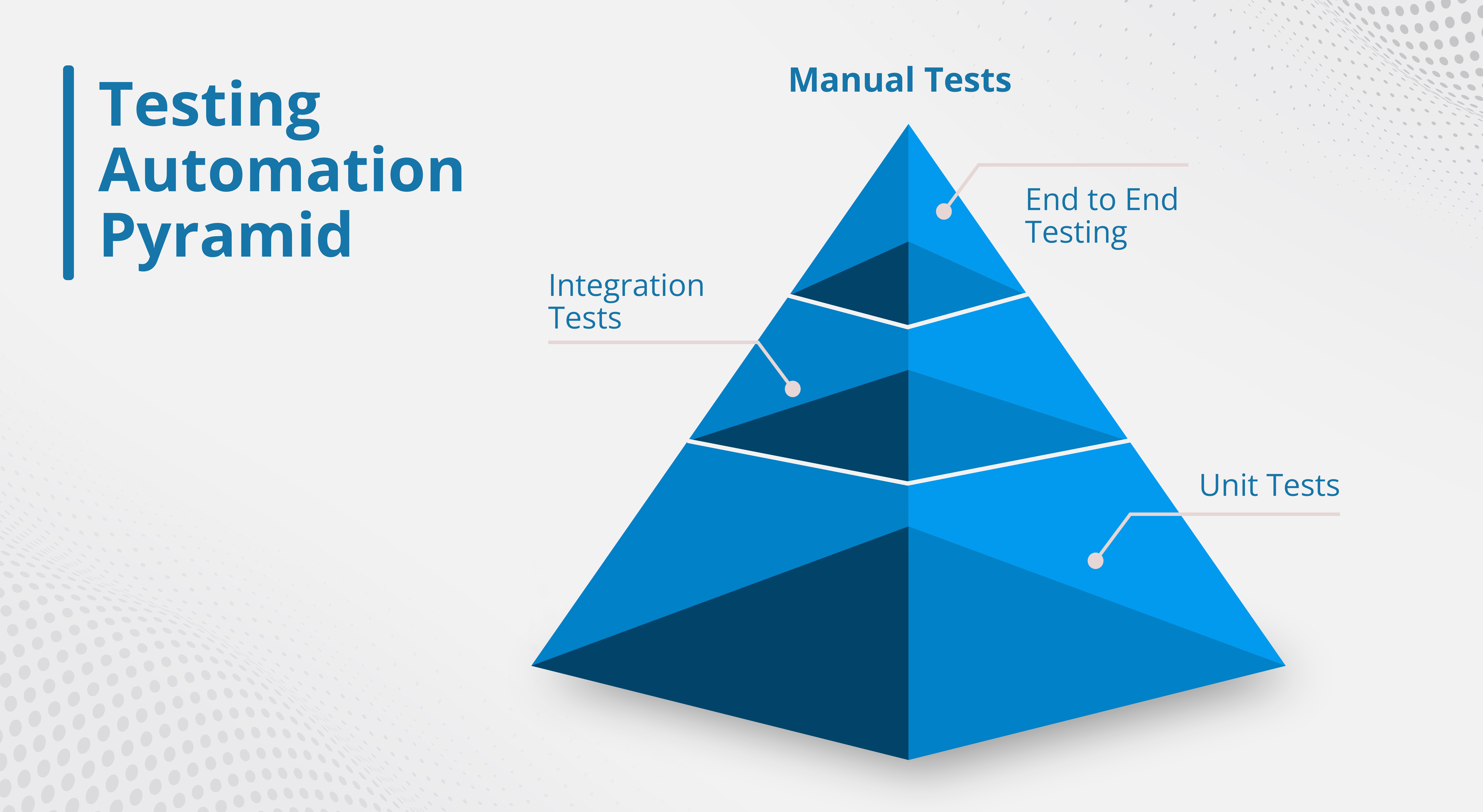The Test automation Pyramid is a strategy that can help both developers and QA create high-quality software. We follow this strategy to reduce developers’ time to identify if a change they introduced breaks the code. It can also help build a more reliable test suite which represents the various types of tests and the frequency at which they should appear in the code-base’s test suite.
This strategy is based on the concept of a pyramid, with the base of the pyramid representing the most tests that run in a short time and provide a quick feedback with around 70% of the total tests, and the top of the pyramid representing the slowest operating pace and with the least percentage of tests around 10%.
This testing pyramid needs a strong base, and that’s where unit tests come in.
The base of the pyramid represents unit tests that focus on testing a very small component or piece of functionality of the code-base. Its goal is to validate that the unit behaves as expected in isolated conditions. This could be an individual function or a class. Developers should focus on testing a number of scenarios ranging from happy path to error handling.
Those tests run in a very short period of time and provide the developer with immediate feedback that code changes don’t break existing features.
Unit tests aren’t enough to ensure the quality of a codebase, so we need to move to a higher level.
The middle of the pyramid represents integration tests that make up the middle tier of our test automation pyramid. This means that integration tests should not appear as often as unit tests. Integration tests are to verify the interaction of this code with other codes in the application, which generally comprise the overall software. These tests check how a code interacts with external components such as external services(APIs), databases, web services, and similar elements. Integration tests ensure that the software communicates efficiently and retrieves accurate data to perform as expected.
Integration tests are generally slower than unit tests due to the necessity of interaction with external sources.
The top of the pyramid checks the enormous bulk of code (the entire application). It uses a test environment and data to simulate real-world functionality. It is the most expensive to maintain and has the slowest operating pace. As this test checks assembled applications, it is also the most difficult to identify issues.
The ideal method to approach end-to-end testing is from the end-users perspective. Testers might consider facts like different ways an end-user might engage with the app.
End-to-end testing is the apex of the test automation pyramid as it can be the most time-consuming phase of the testing process. End-to-end testing is typically fragile and may have unreliable external dependencies like integration tests.
Manual tests
Whilst all of this automation can help you and your teams deliver better quality faster, it is still prudent to schedule manual test cases to focus on how a user may behave, as well as testing more critical scenarios or scenarios which cannot be automated. Often teams will perform a number of different activities here, but your delivery team should be able to identify which activity or activities will suit best. Some ideas include Bug Hunts, Exploratory Testing and Checklists, for example.
One of the main advantages of using the automation pyramid strategy is that it helps our organization to prioritize testing efforts based on the level of automation that can be applied to each test. This helps to ensure that the application or system is thoroughly tested and that it meets the needs of the end-user.
Automated testing can be faster and more efficient than manual testing, and it can also help to reduce the number of human errors that can occur during testing. This can help organizations to save time and money by reducing the need for manual testing and by increasing the efficiency of the testing process which increases client trust and satisfaction.
However, it is important to note that the automation pyramid strategy is not a one-size-fits-all approach. Organizations should carefully consider their specific needs and requirements before implementing the strategy. For example, some organizations may have more critical or important tests that need to be done manually, while others may have more tests that can be automated. Additionally, organizations should also be aware that automated testing is not always the best option and that manual testing may be required in some cases.
